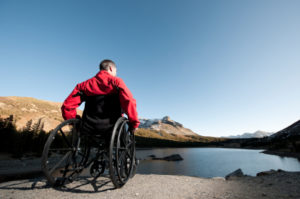Team L&M
Balkrishna Palkar, a farmer from Sindhudurg (Ratnagiri), suffered a major injury in his spine and leg after falling from a coconut tree. The 42-year-old underwent a spine and leg fracture surgery in Goa. Despite being hospitalised for over a month, his condition didn’t improve. He could neither sit nor stand and was been bedridden ever since, depending on others for all basic needs. It was then that he met Dr Pradeep Mahajan in Mumbai through a reference.
“Bal Krishna Palkar came to me completely bedridden. Injuries may have affected the spinal cord or the roots of the spinal nerves which pass through the spaces between the backbones (vertebrae) of the spine. He underwent three sessions of cellular therapy and thereafter, Palkar now manages to sit comfortably without support and stands with the aid of leg splints and a walker. Tremendous improvement has been noticed in his back and leg muscles. Though he requires the support of a walker, he can stand and walk himself. This is major improvement in a short period, considering he was bedridden when he was admitted,” shares Dr Mahajan, regenerative medicine researcher.
“I had no sensation in my legs and back before getting admitted here. I could only move my neck and hands. Whenever I would want to sit, my relatives would suspend a cloth from the ceiling for me to hold on to for support. Even then I could not sit comfortably. I had lost confidence. Now, after successful treatment here, I am able to walk comfortably with full senses,” puts in Palkar.
Spinal cord injury is a devastating condition and a major burden on society and individuals where a patient has to depend on others to attend to their basic needs. As per a study done on prevalence of Spinal Cord Injury (SCI), 23% cases were found to be among farmers while 22% were labourers. Among the causes of injury, 53% patients sustained traumatic injuries due to fall from height and 28% suffered from road traffic accidents.
“A holistic protocol is required to treat such cases which includes intensive rehabilitation programme wherein physiotherapy exercises and neuromuscular stimulation are advised,” says Dr Mahajan.

He cites another case where 19-year-old Sylvanus was bedridden for more than six months after a road accident while travelling on a bike. He sustained injuries in his spine and was immediately hospitalised. He did not undergo any surgery to repair the fracture/ injury. The family was informed that he will not be able to stand or walk in future as he had lost sensory perception in his hips and legs as well as bowel and bladder control. When they consulted Dr Mahajan, Sylvanus was advised two sessions of cell based therapy along with neurorehabilitation.
To remove the scar tissue formed in his spine in the region of injury, Sylvanus underwent a spine surgery under a team of experienced orthopaedic and spine surgeons. For bed sores, he underwent treatment with platelet rich plasma. Within a month, it was noticed that the patient regained some sensory perception in his buttock area. Following th is, he was trained to stand with the help of calipers and a walker. Although he hasn’t regained bladder control yet, he is able to appreciate some sensation of bladder fullness.
“I was depressed after my accident as I was unable to stand or walk and lost perception in hips and legs. I am thankful to Dr Mahajan and his team because after the treatment, I am now able to stand and walk,” says Sylvanus.
To spread awareness about spinal injuries, Union Minister for Science and Technology Harsh Vardhan flagged off a rally at Rajpath in New Delhi on September 2. The rally, comprising over 200 wheelchair users as well as able-bodied persons, was followed by a candle march, both of which were organised by the Indian Spinal Injuries Centre (ISIC) in association with the International Spinal Cord Society.
International Spinal Cord Society (ISCoS) decided to observe September 5 as Spinal Cord Injury (SCI) Day with the intention of increasing awareness among general public. It is presumed the awareness would facilitate an inclusive life for persons with disability and ensure success of prevention programmes. September 5, a neutral day without any significance, was decided upon since the weather across the globe is likely to be conducive for outdoor activities and schools as well as colleges are generally open, allowing the younger generation to be targetted and create awareness among them.
You will be shocked to know that over 1.5 million in India live with spinal cord injury and around 20,000 new cases are added every year. Unfortunately, around 70% of this number are illiterate poor farmers, majority being males in the age bracket of 16 to 30.
Unfortunately, falling from a height remains the highest among the etiological features in India but there has been a gradual trend of road accidents that have resulted in spinal cord injuries which indicate increase in number of vehicles on roads and gradual urbanisation.
Not this alone, lack of basic infrastructure and trained medical professionals, especially in the rural belt, contribute to the rise in the number of cases. Added to it is a vast majority of people lacking basic knowledge about initial immobilisation and transportation of such patients to higher centres.
By the time a patient reaches a general or institutional hospital, there are chances of extensive damage to the neurological status which could have been prevented. The need of the hour, therefore, is to open more specialised centres for the management of such patients as also to train paramedical staff in rural areas about initial handling and transportation of patients having suffered spinal cord injuries. A comprehensive multidisciplinary management and rehabilitation approach is the need of the hour to reintegrate patients with SCI to the community.